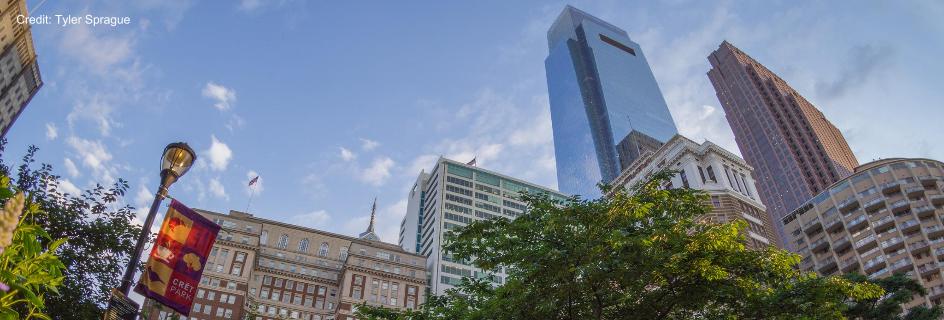- About GPA
- Global Events
- GLOBAL NEWS FROM PHL
- Global Directory
- World Heritage City
- Sustainable Development Goals (SDGs)
- Global Philadelphia Role on Sustainable Development Goals
- Completed Sustainable Development Goals
- SDG#1: No Poverty
- SDG #2: Zero Hunger
- SDG#3: Good Health & Well-Being
- SDG#4: Quality Education
- SDG#5: Gender Equality
- SDG#6: Clean Water & Sanitation
- SDG#7: Affordable and Clean Energy
- SDG #8: Decent Work and Economic Growth
- SDG #9: Industry, Innovation, and Infrastructure
- SDG#10: Reduced Inequalities
- SDG#11: Sustainable Cities and Communities
- SDG#16: Peace, Justice and Strong Institutions
- SDG#17: Partnerships for the Goals
- Press
Home ›
Academy of Natural Sciences Fellow Illuminates Author’s Legacy
Posted on November 16, 2014

Peter Chawaga, for GPA -- Ernest Hemingway did more to change the style of English prose than any other writer in the twentieth century.
At least that is the claim on the back covers of his works recently republished by Scribner. Lofty praise, even for a promotional blurb.
Hemingway is deservedly revered in literary circles for defining an effective, narrative voice in declarative prose and he is infamous as an adventurer, drinker and machismo-obsessed celebrity of his own time.
An accomplishment overlooked in his paperback promotions and popular persona has been the author’s contributions to the scientific community. His understanding of nature’s redemptive qualities and passion for hunting is well documented in his prose, but many don’t realize that his love of fishing resulted in a summer of cataloging for the Academy of Natural Sciences of Philadelphia in 1934.
It was this scientific legacy, combined with the 60th anniversary of the author’s receiving the Nobel Prize in Literature, that led the Washington, D.C. based Latin American Working Group to approach the Academy about participating in the “U.S. - Cuba Hemingway Commemorative Project: Protecting the Natural Resources of the Florida Straits.”
The group organized by the project traveled to Cuba in early September with the goal of opening a continued dialogue between American and Cuban naturalists to forge a better understanding of the marine resources shared by the two countries.
Senior Fellow Robert Peck, who is the Academy’s official historian and has written about its collaboration with Hemingway, was selected to represent the institution. He joined an envoy of 14 Americans, including Hemingway’s grandsons John and Patrick and a team of prominent marine biologists and naturalists.
Peck was chosen in part for his unique knowledge of the author’s conservation work.
“Unfortunately, for many, Hemingway’s bigger-than-life reputation for aggressive masculinity has sometime overshadowed other aspects of his life,” he said. “He was, in fact, surprisingly sensitive to personal relationships and had a very deep sympathy for the natural world. In preparation for this trip, I reread all of the letters he wrote to the Academy of Natural Sciences before and after the 1934 fishing project in which he was such a central figure. I was struck by the seriousness with which he took the science behind his love of fish.”
In the early 1940s, Hemingway bought an estate outside of Havana known as Finca Vigía. There, he wrote, fished and became an honorary citizen of the small village of Cojimar, the inspiration for The Old Man and the Sea, possibly his most widely read work.
During the visit, the team took a symbolic journey by boat from the Hemingway Marina in Havana to Cojimar.
“When Hemingway’s grandsons visited Finca Vigía and Cojimar, they received enormous press coverage, allowing them to raise the subject of marine conservation in a public forum,” said Peck, noting Ernest Hemingway’s lasting presence in modern day Cuba.
Three days later, the Hemingways spoke in a special Nobel Prize commemoration at their grandfather’s estate, celebrating the author’s dedication of the award to the Cubans who had inspired his work.
The group also met with Cuban scientists to discuss cooperative efforts to preserve marlin, tuna and other sport fish that live in the Florida Straits, a population that Peck sees as being in urgent distress.
“Hemingway was identified as a highly respected, apolitical figure around whom both countries could rally to study and protect the big game fish that are now facing unsustainable fishing pressure in the Florida Straits,” said Peck. “Our meetings with fisheries experts in Cuba were very productive. We are now working through the next steps of what we expect to become an ongoing dialogue.”
Peck returned to Philadelphia with a newfound respect for the author, both as a literary figure and as a human being. As Hemingway’s established era of American literature persists on the backs of his books, his work beyond the page may yet find a new audience.
Image courtesy of the JFK Library.







